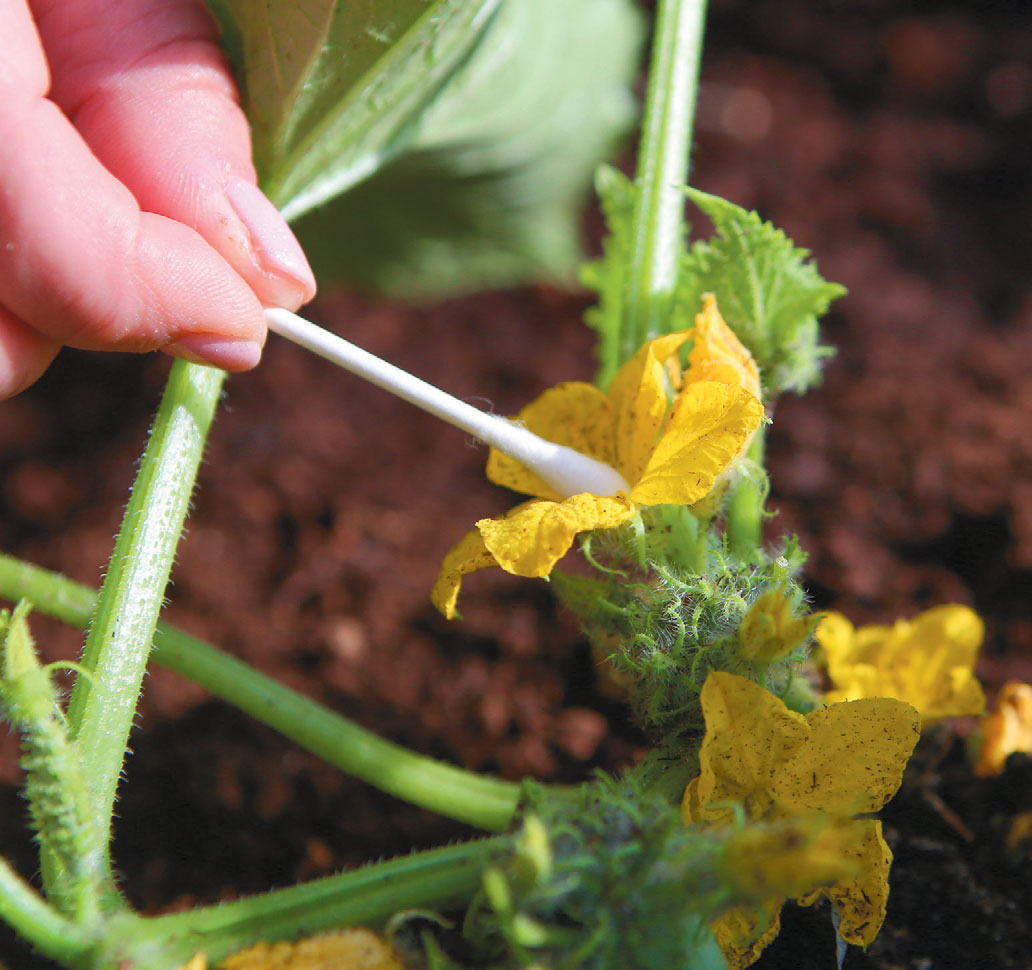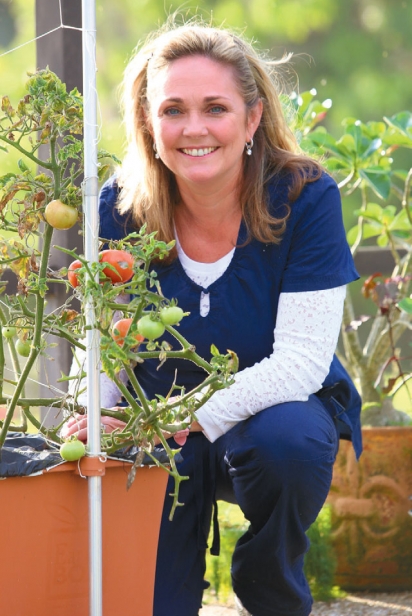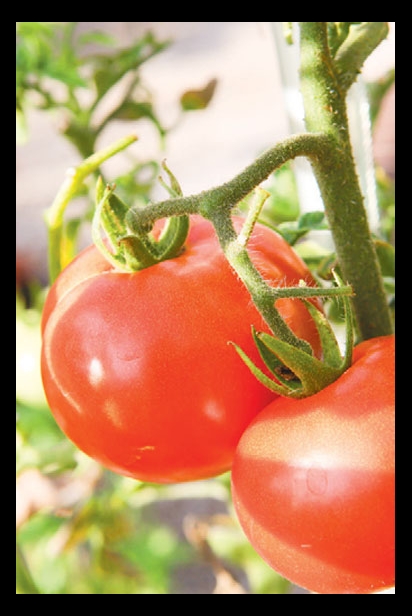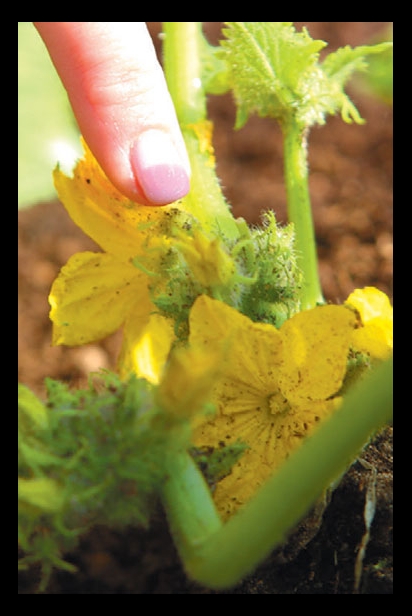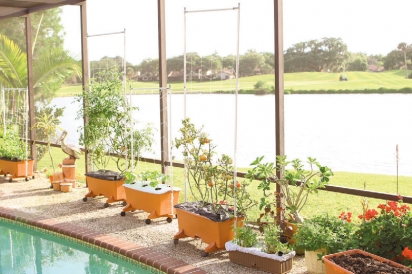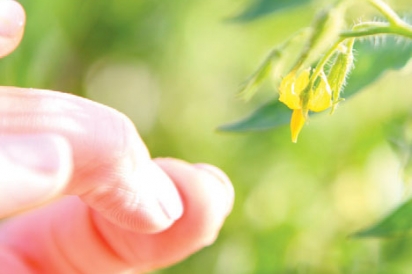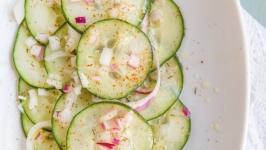Human Bee-Ing: Hands-on Pollinating Helps Garden Thrive
Wendy Bradshaw offers me a glass of cold lemonade as we sit at the dining room table in her beautiful lakeside home in Bent Tree. Surrounded by the lake to the south, the neighborhood’s main street and golf course to the west, and a friendly neighbor to the east, the lot seemingly offers no space for a large, productive kitchen garden.
But as we make our way to the back patio, I notice it’s abundant with produce.
Bradshaw, a nurse at the Meckler Admissions Center at Sarasota Memorial Hospital for the last 11 years, discovered gardening as therapy three years ago to escape heavy matters related to her father’s health.
“It was just a really traumatic time, so ... I said, ‘I just want to grow things; I want life.’”
With a love of cooking, and a little genetic instinct (her parents and grandparents grew tomatoes, among other things), and inspired by brother-in-law John Freeman’s initiation of Southside Elementary’s Earth Box garden, Bradshaw started small, growing tomatoes and cucumbers in her own Earth Boxes.
Although the boxes on Bradshaw’s screened-in patio were happy with the six hours of daily sunlight and consistent water supply, her cucumber plants would flower, but ultimately the flowers would fall off and leave her with no fruit.
“I googled it and found out I needed bees because there is a male and female flower, and they don’t pollinate by air,” says Bradshaw. “They need to touch or need an animate object to help them.”
So even though the screen cage was offering protection from harmful insects, it was also preventing the plant’s symbiotic relationship with bees and other beneficial insects to help pollinate the flowers. Instead of moving her boxes outside the screen, Bradshaw took matters into her own steady hands and began hand-pollinating her cucumber flowers.
“I discovered you could use a paintbrush, you could use a Q-tip, you could even actually take the male flower and unpeel it and stick him in the female flower,” she explains.
“I just go from the male to the female plant and spin it all around,” says Bradshaw as she shows me the small makeup brush she uses in addition to a “cute little paintbrush.”
She says it’s simple to tell the flowers apart: Females have a little fruit attached at the base of the flower, and males have a very long stem.
Over her last six growing seasons, Bradshaw has hand-pollinated other fruits and veggies, and she is currently assisting the bees in pollinating strawberry plants she keeps in a box outside the patio.
Her extra attention has paid off, and she and her family enjoy a bounty of various fruits and veggies. In fact, she has gone from being known as “Nurse Vampire” (she draws blood and sets IVs) to “Farmer Wendy” because of all the produce she shares with co-workers.
For Bradshaw, what started as a two–Earth Box hobby is now a 10-box personal retreat lush with seasonal herbs, tomatoes, broccoli, cauliflower, Brussels sprouts, sugar snap peas, and Malabar climbing spinach. That she can construct a tomato sandwich from her garden, evoking memories of summers at home with family in Canada, is her best reward.
“I love it,” she says. “It makes me so happy.”
And her beaming smile as she discusses plans to expand her urban oasis clearly conveys that her garden is no longer a hobby, but a lifestyle she hopes to be able to share with distant loved ones.
“I am growing tomatoes hoping that my father will be here one day to taste them.”
WENDY’S GARDENING TIP:
Although tomatoes are self-pollinating, you can help them to be more productive by flicking the anther up into the flower to produce better tomatoes.


